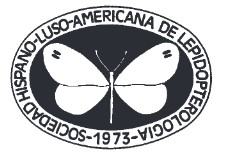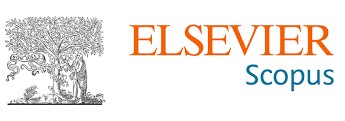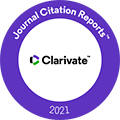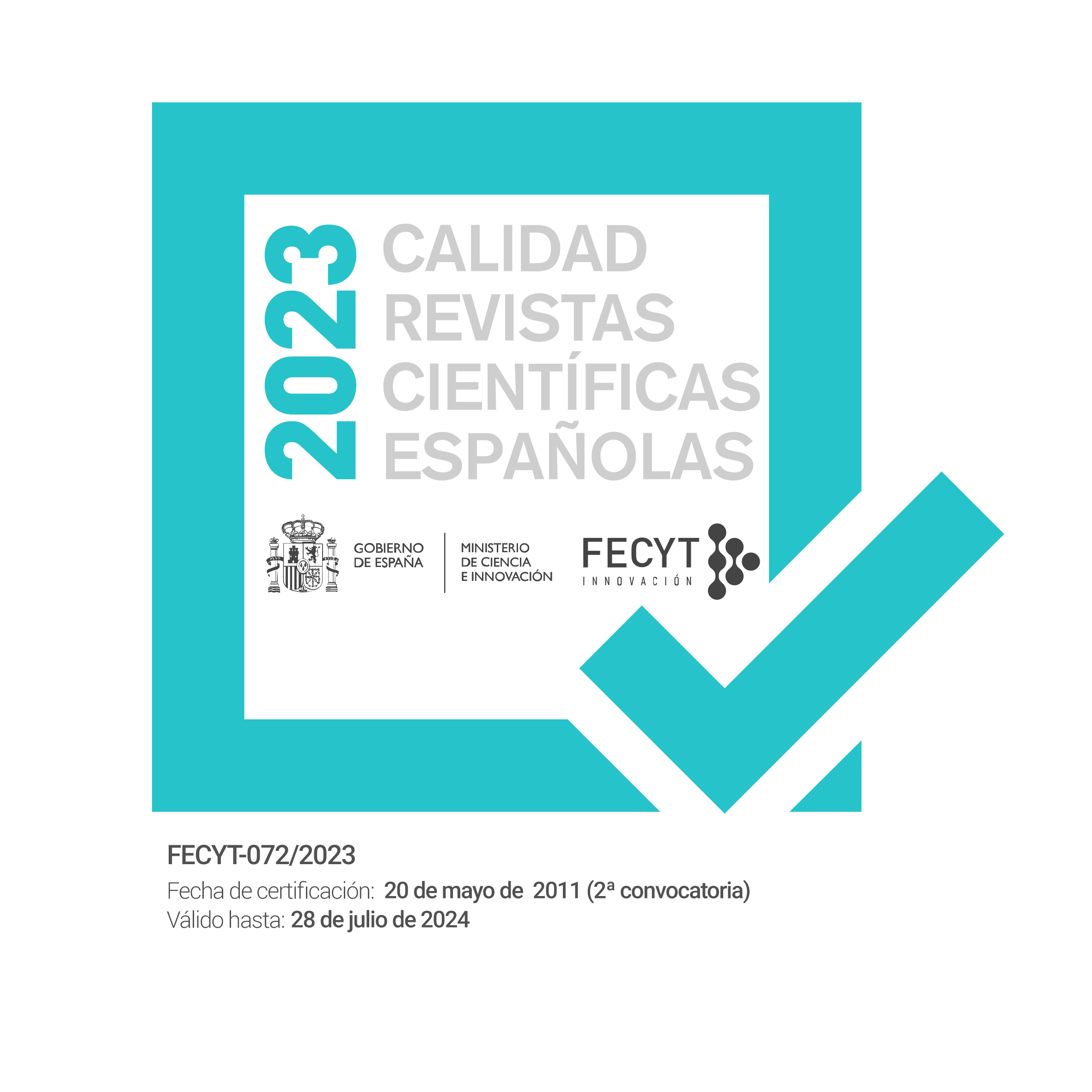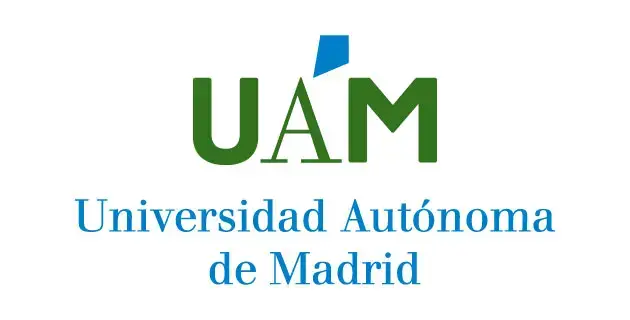Nymphalidae of the Caldera de Lubá. Bioko Island (Equatorial Guinea) (Lepidoptera: Nymphalidae)
DOI:
https://doi.org/10.57065/shilap.700Keywords:
Lepidoptera, Nymphalidae, Caldera de Lubá, species richness, diversity estimations, accumulation curves, Bioko, Equatorial GuineaAbstract
The present paper shows the first records of butterflies Nymphalidae of the Caldera de Lubá (Bioko Island). Seven from the 46 species showed, Cymothoe althea, C. consanguis, C. capella, Lachnoptera anticlia, Amauris vashti, Bicyclus golo and Bicyclus neustetteri, represent the first cites of Bioko. From these species only Lachnoptera anticlia, Amauris vashti and Cymothoe capella are cited in Continental Region, but for others also represent the first cites of Equatorial Guinea. Several measures of richness and diversity were used (Marga- lef, Simpson, Shannon-Weaver), showing all high values.
Downloads
Global Statistics ℹ️
|
323
Views
|
112
Downloads
|
|
435
Total
|
|
References
ACKERY, P. R., SMITH, C. R. & VANE-WRIGHT, R. I., 1995.– Carcasson’s African Butterflies: An annotated Catalogue of the Papilionoidea and Hesperioidea of the Afrotropical Region : 803 pp. British Museum (Natural History). London. DOI: https://doi.org/10.1071/9780643100787
ACKERY, P. R., DE JONG, R. & VANE-WRIGHT, R. I., 1999.– The butterflies: Hedyloidea, Hesperioidea and Papilionoidea.– In N. P. KRISTENSEN (ed.). Handbook of Zoology, 4(35): 263-300. De Gruyter, Berlin. DOI: https://doi.org/10.1515/9783110804744.263
BAEV, P. V. & PENEV, L. D., 1995.– BIODIV: program for calculating biological diversity parameters, similarity, niche overlap, and cluster analysis. Version 5.1.: 57 pp. Pensoft, Sofia-Moscow.
BECK, J. & SCHWANGHART, W., 2010.– Comparing measures of species diversity from incomplete inventories: an update.– Methods in Ecology & Evolution, 1: 38-44. DOI: https://doi.org/10.1111/j.2041-210X.2009.00003.x
BONEBRAKE T., PONISIO, C., BOGGS, C. L. & EHRLICH, P. R., 2010.– More than just indicators: A review of tropical butterfly ecology and conservation.– Biological Conservation, 143: 1831-1841. DOI: https://doi.org/10.1016/j.biocon.2010.04.044
BROWER, A. V. Z., 2000.– Phylogenetic relationships among the Nymphalidae (Lepidoptera), inferred from partial sequences of the wingless gene.– Proceedings of the Royal Society of London (B), 267: 1201-1211. DOI: https://doi.org/10.1098/rspb.2000.1129
BURGESS, N., HALES, J. D., RICKETTS, T. H. & DINERSTEIS, E., 2006.– Factoring species, non-species values and threats into biodiversity prioritisation across the ecoregions of Africa and its islands.– Biological Conservation, 127: 383-401. DOI: https://doi.org/10.1016/j.biocon.2005.08.018
BUTYNSKI, T. M. & KOSTER, S. H., 1994.– Distribution and conservation status of primates in Bioko Island, Equatorial Guinea.– Biodiversity and Conservation, 3: 893-909. DOI: https://doi.org/10.1007/BF00129665
CHAO, A., 1984.– Non–parametric estimation of the number of classes in a population. Scandinavian Journal of Statisics, 11: 265-270.
CHAO, A., 2005.– Species richness estimation.– In N. BALAKRISHNAN, C. B. READ & B. VIDAKOVIC Eds. Encyclopedia of Statistical Sciences: 7909-7916. Wiley, New York.
COLWELL, R. K., 2006.– EstimateS: Statistical Estimation of Species Richness and Shared Species from Samples.
Version 9. User’s Guide and application published. Available from http://purl.oclc.org/estimates. (Accedido el 3 de octubre de 2014).
COLWELL, R. K., MAO, C. X. & CHANG, J., 2004.– Interpolating, extrapolating, and comparing incidence- based species accumulation curves.– Ecology, 85: 2717-2727. DOI: https://doi.org/10.1890/03-0557
ESPINOSA, T., 2003.– ¿Cuántas especies hay? Los estimadores no paramétricos de Chao.– Elementos de ciencia y cultura, 52: 53-56.
FREITAS, A. V. L. & BROWN, K. S., 2004.– Phylogeny of the Nymphalidae (Lepidoptera).– Systematic Biology, 53: 363-383. DOI: https://doi.org/10.1080/10635150490445670
FUSTER J. M., 1956.– Un accidente volcánico excepcional: la Caldera de San Carlos (Fernando Poo).– Archivos IDEA, 40: 65-74.
GOTELLI, N. J. & COLWELL, R. K., 2001.– Quantifying biodiversity: procedures and pitfalls in the measurement and comparison of species richness.– Ecology Letters, 4: 379-391. DOI: https://doi.org/10.1046/j.1461-0248.2001.00230.x
GONZÁLEZ-OREJA, J. A., DE LA FUENTE, A. A., HERNÁNDEZ, L., BUZO, D. & BONACHE, C., 2010.– Evaluación de estimadores no paramétricos de la riqueza de especies. Un ejemplo con aves en áreas verdes de la ciudad de Puebla, México.– Animal Biodiversity and Conservation, 33(1): 31-45. DOI: https://doi.org/10.32800/abc.2010.33.0031
JIMÉNEZ-VALVERDE, A. & HORTAL, J., 2003.– Las curvas de acumulación de especies y la necesidad de evaluar la calidad de los inventarios biológicos.– Revista Ibérica de Aracnología, 8: 151-161.
HALFFTER, G. & EZCURRA, E., 1991.– ¿Qué es la Biodiversidad?.– In G. HALFFTER. La Diversidad Biológica de Iberoamérica: 3-24. Acta Zoológica Mexicana (n.s.): 389 pp. CYTED-D, Programa Iberoamericano de Ciencia y Tecnología para el Desarrollo, México D. F.
HARVEY, D. J., 1991.– Higher classification of the Nymphalidae.– In H. F. NIJHOUT. The Development and Evolution of Butterfly Wing Pattems: 255-273. Smithsonian lnstitution Press, Washington D. C.
HAYWOOD, V. H., 1994.– The measurement of biodiversity and the politics of implementation.– In P. L. FOREY, C. J. HUMPHRIES & R. I. VANE-WRIGHT (Eds). Systematic and Conservation Evaluation, 15-22: 438 pp. Oxford.
HENNING, S., 1988.– The Charaxinae butterflies of Africa: 457 pp. Ed. Frandsen. Horsens.
JIMÉNEZ-VLAVERDE, A. & HORTAL, J. 2003.– Las curvas de acumulación de especies y la necesidad de evaluar la calidad de los inventarios biológicos.– Revista Ibérica de Aracnología, 8: 151-161.
JIMÉNEZ-VALVERDE, A., JIMÉNEZ-MENDOZA, S., MARTÍN-CANO, J. & MUNGUIRA, M. L., 2006.– Comparing relative model fit of several species–accumulation functions to local Papilionoidea and Hesperioidea butterfly inventories of Mediterranean habitats.– Biodiversity and Conservation, 15: 177-190. DOI: https://doi.org/10.1007/s10531-004-5016-y
JOST, L., 2010.– The relation between evenness and diversity.– Diversity, 2: 207-232. DOI: https://doi.org/10.3390/d2020207
KHEIL, N. M., 1909.– Catálogo sistemático de la fauna de las posesiones españolas del Golfo de Guinea (Lepidópteros).– Memorias de la Sociedad Española de Historia Natural I, Memoria 1(28): 483-506.
LARSEN, T. B., 2005.– Butterflies of West Africa: 595pp. Apollo Books, Svendborg. DOI: https://doi.org/10.1163/9789004531093
LARSEN, T. B., 2011.– The IUCN Red List of Threatened Species. Version 2014.2. Available from http://www.iucnredlist.org. (accessed 16 September 2014).
LONGINO, J. T., CODDINGTON, J. & COLWELL, R. K., 2002.– The ant fauna of a tropical rain forest: estimating species richness three different ways.– Ecology, 83: 689-702. DOI: https://doi.org/10.1890/0012-9658(2002)083[0689:TAFOAT]2.0.CO;2
MADDISON, D. R. & SCHULZ, K. S., 2007.– The Tree of Life Web Project. Available from http://tolweb.org. (accessed 25 April 2014). DOI: https://doi.org/10.11646/zootaxa.1668.1.4
MARGALEF, R., 1958.– Information theory in ecology.– General Systematics, 3: 36-71.
MARGALEF, R., 1972.– Homage to Evelyn Hutchinson, or why there is an upper limit to diversity.– Transactions of the Connecticut Academy of Arts and Sciences, 44: 211-235.
MAGURRAN, A. E., 1998.– Ecological diversity and its measurement:. 179 pp. Princeton University Press, New Jersey.
MAGURRAN, A. E., 2007.– Species abundance distributions over time.– Ecology Letters, 10: 347-354. DOI: https://doi.org/10.1111/j.1461-0248.2007.01024.x
MARTÍN, I. & COBOS, P., 2010.– Expedición Científica a la Caldera de Lubá. Isla de Bioko (Guinea Ecuatorial).– In E. VIGUERA, A. GRANDE & J. LOZANO (Coordinadores). Encuentros con la Ciencia II. Del macrocosmos al microcosmos: 137-150. Servicio de Publicaciones de la Universidad de Málaga. Málaga.
MARTÍN, I., ARREDONDO, A. & VÉLEZ, Y., 2014.– Anfibios y reptiles del Parque Nacional de las Tablas de Daimiel: 167 pp. Organismo Autónomo de Parques Nacionales. Madrid.
MARTÍNEZ, T., 1968.– Fernando Poo: geografía, historia, paisaje: 119 pp. La Guinea Española Ediciones, Instituto Claretiano Africanista Santa Isabel.
MORENO, C. E., 2001.– Métodos para medir la biodiversidad.– Manuales y Tesis Sociedad Entomológica Aragonesa, 1: 1-84.
MORENO, C. E. & HALFTER, G., 2001.– On the measure of sampling effort used in species accumulation curves.– Journal of Applied Ecology, 38: 487-490 DOI: https://doi.org/10.1046/j.1365-2664.2001.00590.x
MORENO, C. E., BARRAGÁN, F., PINEDA, E. & PAVÓN, N., 2011.– Reanálisis de la diversidad alfa: alternativas para interpretar y comparar información sobre comunidades ecológicas.– Revista Mexicana de Biodiversidad, 82: 1249-1261. DOI: https://doi.org/10.22201/ib.20078706e.2011.4.745
NAVARRO, R. M., CLEMENTE, M., KASIMIS, N., PADRÓN, E., HERNÁNDEZ, E., MARTÍN, E. & GARCÍA, A., 2012.– Cartografía de la vegetación de la Isla de Bioko (Guinea Ecuatorial) mediante el uso de imágenes LandSat 7 ETM+: particularización del piso afromontano.– Darwiniana, 50(2): 252-265.
NÚÑEZ, E., 1991.– Sobre la cuantificación de la diversidad ecológica.– Hidrobiológica, 1(1): 87-93.
NYLIN, S. SLOVE, J. & JANZ, N., 2014.– Host plant utilization, host range oscillations and diversification in nymphalid butterflies: a Phylogenetic investigation Evolution.– International Journal of Organic Evolution, 68(1): 105-124. DOI: https://doi.org/10.1111/evo.12227
OBAMA, C., 2006.– De la expansión a la recesión: la inoperancia legal en la gestión de los recursos forestales de Guinea Ecuatorial: 166-181. Movimiento Mundial por los Bosques Tropicales, WRN.
PALMER, M. W., 1990.– The estimation of species richness by extrapolation.– Ecology, 71: 1195-1198. DOI: https://doi.org/10.2307/1937387
TURLIN, B., 1999.– Observations sur les espèces insulaires africaines de la sous-famille des Charaxinae (Lepidoptera: Nymphalidae).– Lambillionea, 49: 171-182.
TURLIN, B., 2007.– Butterflies of the World, Part 28: Nymphalidae, No. 14: The Afrotropical Species of Charaxes, Part 3: 40 pp. Antiquariat Goecke & Evers, Keltern.
RICKETTS, T. H.; DAILY, G. C. & EHRLICH, P. R., 2002.– Does butterfly diversity predict moth diversity? Testing a popular indicator taxon at local scales.– Biological Conservation, 103: 361-370. DOI: https://doi.org/10.1016/S0006-3207(01)00147-1
RICOTTA, C., 2005.– Through the jungle of biological diversity.– Acta Biotheoretica, 53: 29-38. DOI: https://doi.org/10.1007/s10441-005-7001-6
SÁFIÁN S. Z., COLLINS, S. C., KORMOS, B. & SIKLÓSI, A., 2009.– African Butterfly Database version 1.0. Available from http://www.abdb-africa.org. (accessed 7 October 2014).
SAMWAYS, M. J., 1994.– Insect Conservation Biology: 358 pp. Chapman & Hall, London.
SOBERÓN, J. & LLORENTE, J., 1993.– The use os species accumulation functions for the prediction of species richness.– Conservation Biology, 7: 480-488. DOI: https://doi.org/10.1046/j.1523-1739.1993.07030480.x
SPEARMAN, L. A., ORFE, N. A. & WEINTRAUB, J. D., 2000.– An annotated list of the butterfly fauna of Bioko Island, Equatorial Guinea (Lepidoptera: Papilionoidea, Hesperioidea).– Transactions of the American Entomological Society, 126(3-4): 447-475.
VANE-WRIGHT R, HUMPHRIES, C. & WILLIAMS, P. 1991.– What to protect? Systematics and the agony of choice. Biological Conservation 55: 235-254. DOI: https://doi.org/10.1016/0006-3207(91)90030-D
VANE-WRIGHT, R. I., 2003.– Evidence and identity in butterfly systematics.– In C. L. BOGGS, W. B. WATT & P. R. EHRLICH (eds). Butterflies: Ecology and Evolution Taking Flight: 477-513. University of Chicago Press, Chicago.
WAHLBERG, N., WEINGARTNER, E. & NYLIN, S., 2003.– Towards a better understanding of the higher systematics of Nymphalidae (Lepidoptera: Papilionoidea).– Molecular Phylogenetics and Evololution, 28: 473-484. DOI: https://doi.org/10.1016/S1055-7903(03)00052-6
WAHLBERG, N., BRABY, M. F., BROWER, A. V. Z., DE JONG, R., LEE, M. M., NYLIN, S., PIERCE, N., ESPERLING, F., VILA, R., WARREN, A. D. & ZAKHAROV, E., 2005.– Synergistic effects of combining morphological and molecular data in resolving the phylogeny of butterflies and skippers. Proceedings of the Royal Society Series B 272:1577-1586. DOI: https://doi.org/10.1098/rspb.2005.3124
WAHLBERG, N., LENEVEU, J., KODANDARAMAIAH, U., PEÑA, C., NYLIN, S., FREITAS, A. V. L. & BROWER, A. V. Z., 2009.– Nymphalid butterflies diversity following near demise at the Cretaceous/Tertiary boundary.– Proceedings of the Royal Society Series B Biological Sciences, 276: 4295-4302. DOI: https://doi.org/10.1098/rspb.2009.1303
WHITTAKER, R. H., 1972.– Evolution and measurement of species diversity.– Taxon, 21: 213-251. DOI: https://doi.org/10.2307/1218190
WILLIAMS, M. C., 2008.– Checklist of Afrotropical Papilionoidea and Hesperoidea.– Compiled by Mark C. Williams, 7th ed. Available from http://www.atbutterflies.com/index.htm (accessed 18 August 2014).
WILLIAMS, M. R., 2008.– Assessing diversity of diurnal Lepidoptera in habitat fragments: testing the efficiency of strip transects. -Environmental Entomology, 37: 1313-1322. DOI: https://doi.org/10.1603/0046-225X(2008)37[1313:ADODLI]2.0.CO;2
ZAMORA, C.; PARRA, E. & JAQUE, E., 2011.– Patrones de distribución de los geométridos de la Región del Biobío, Chile: Una aproximación para su conservación.– Revista Chilena de Historia Natural, 84(4): 465-480. DOI: https://doi.org/10.4067/S0716-078X2011000400001
ZHANG, M., CAO, T., JIN, K., REN, Z., GUO, Y., SHI, J., ZHONG, Y. & MA, E., 2008.– Estimate divergence times among subfamilies in Nymphalidae.– Chinese Science Bulletin, 53(17): 2652-2658. DOI: https://doi.org/10.1007/s11434-008-0344-z
Downloads
Published
How to Cite
Issue
Section
License
Copyright (c) 2016 I. Martín

This work is licensed under a Creative Commons Attribution 4.0 International License.
The author SS retains his trademark and patent rights to any process or procedure within the article.
The author retains the right to share, distribute, perform and publicly communicate the article published in SHILAP Revista de lepidopterología, with initial acknowledgement of its publication in SHILAP Revista de lepidopterología.
The author retains the right to make a subsequent publication of his work, from using the article to publishing it in a book, provided that he indicates its initial publication in SHILAP Revista de lepidopterología.
Each submission to SHILAP Revista de lepidopterología must be accompanied by an acceptance of copyright and acknowledgement of authorship. By accepting them, authors retain copyright of their work and agree that the article, if accepted for publication by SHILAP Revista de lepidopterología, will be licensed for use and distribution under a "Creative Commons Attribution 4.0 International" (CC BY 4.0) licence that allows third parties to share and adapt the content for any purpose giving appropriate credit to the original work.
You may read here the basic information and the legal text of the license. The indication of the CC BY 4.0 License must be expressly stated in this way when necessary.
As of 2022, the content of the print and digital version is licensed under a "Creative Commons Attribution 4.0 International License" (CC BY 4.0), licence that allows third parties to share and adapt the content for any purpose giving appropriate credit to the original work.
Previous content in the journal was published under a traditional copyright licence; however, the archive is available for free access.
When using the contents of SHILAP Revista de lepidopterología published before 2022, including figures, tables or any other material in printed or electronic format belong to the authors of the articles, the authors must obtain the permission of the copyright holder. Legal, financial and criminal liabilities in this respect belong to the author(s).
In application of the Principle of Priority of the International Code of Zoological Nomenclature, no other version than the one published by the publisher may be deposited in repositories, personal websites or similar.





